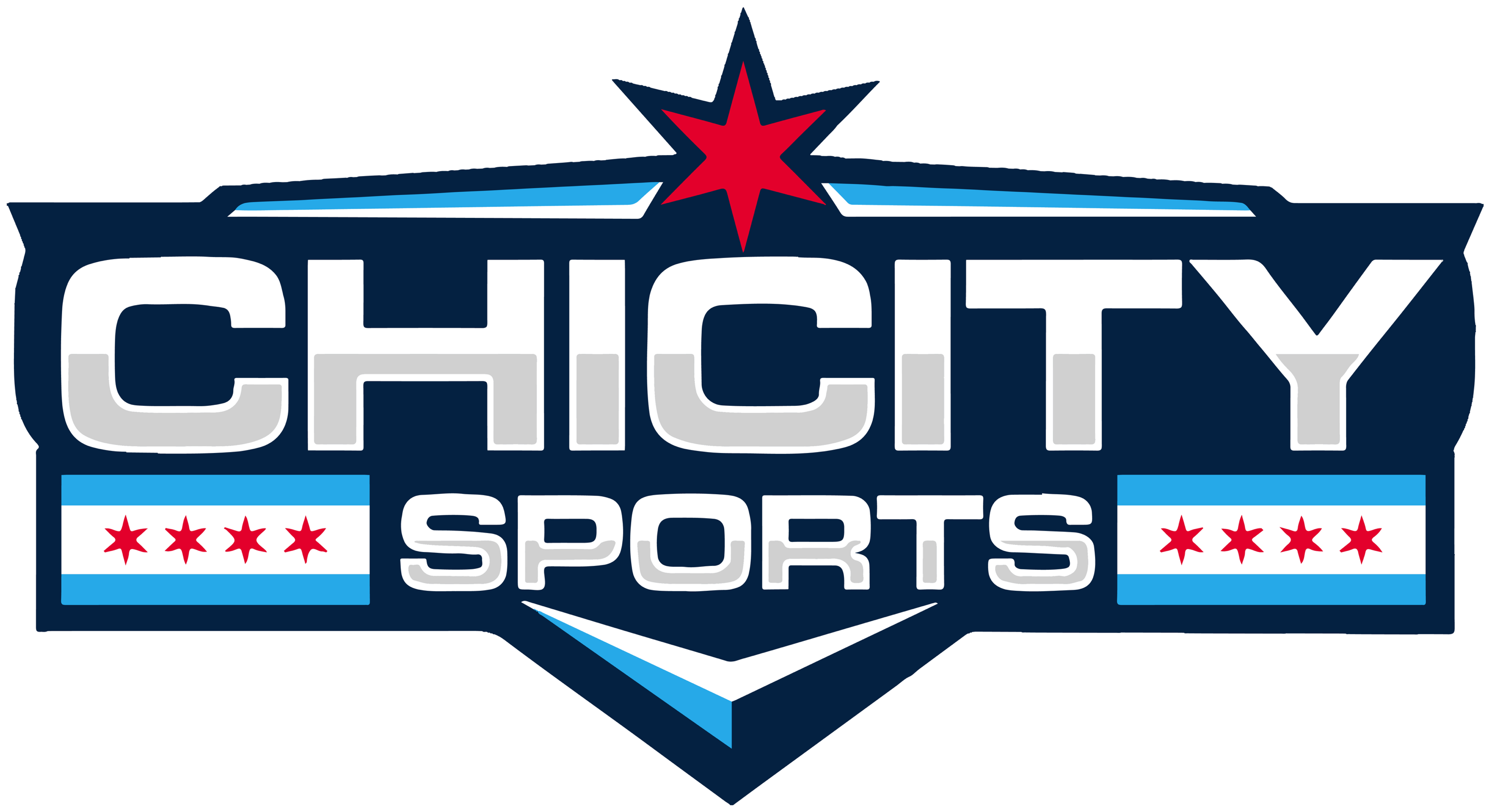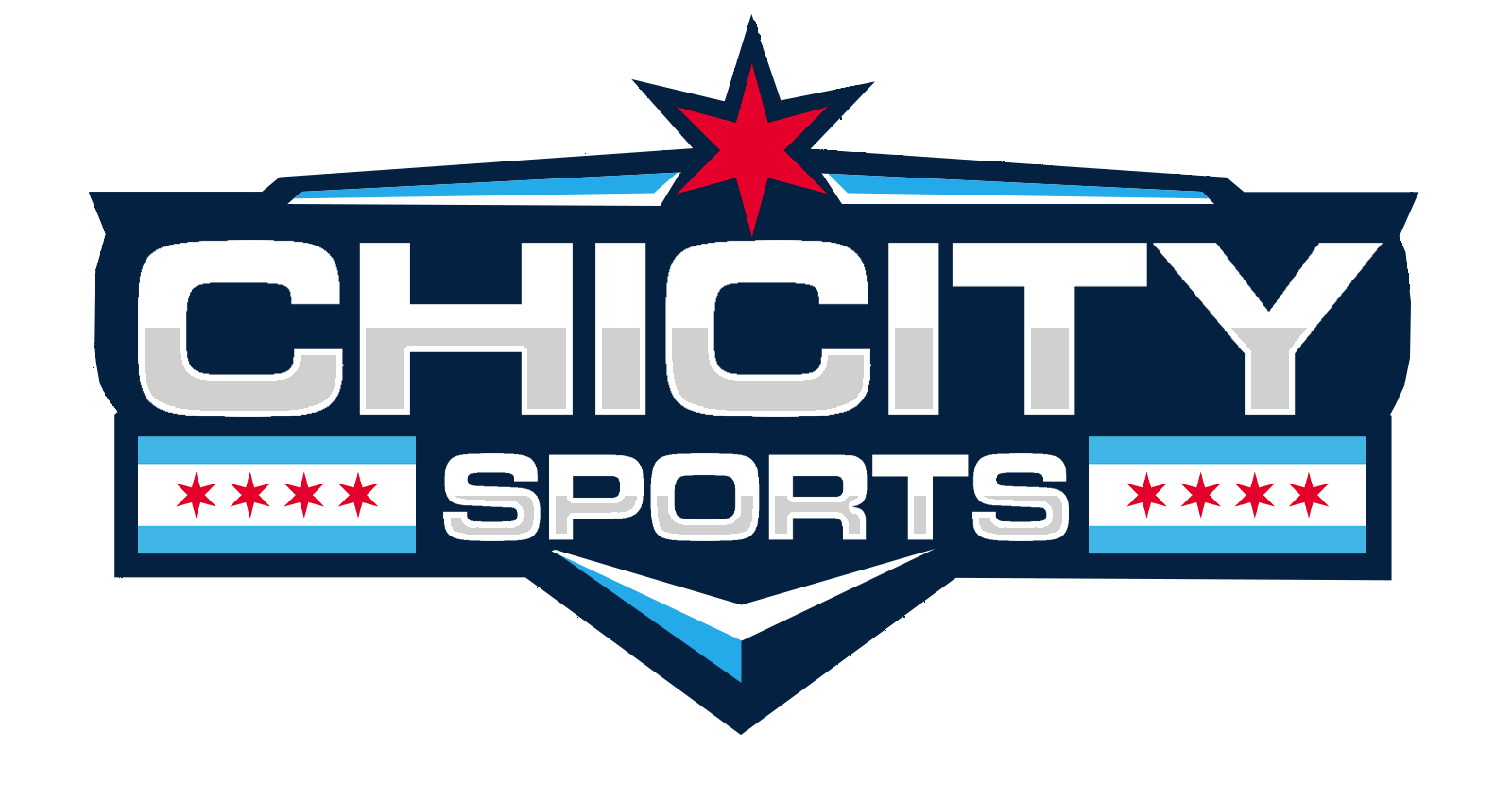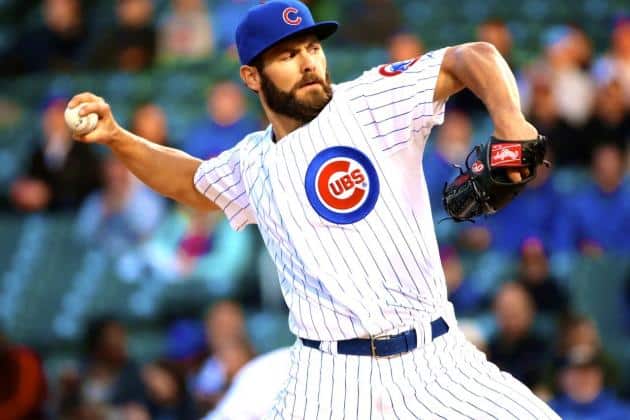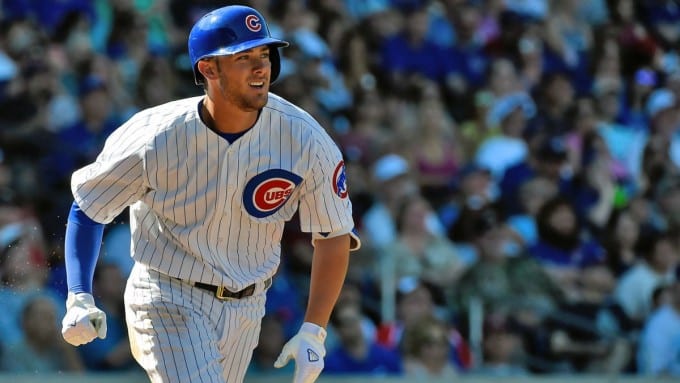Entering the 2015 season, opinions varied wildly as to where exactly the Chicago Cubs were going to fit. Some well-intentioned, over-eager supporters declared the Cubs were ready for prime time –that Kris Bryant would hit 84 home runs and drive in 250 runs. Others thought a .500 finish would be a sign of “The Plan” functioning properly. Some thought a little over .500 was in the works, and that a wild card berth was a realistic possibility. And then there were the perpetual pessimists who thought the Cubs would crash and burn because, well, don’t they always?
And here we sit at the All Star Break; the Cubs at a healthy 47-40, clinging to the second wild card spot, and plenty of time remaining to do any of the above. That has to be seen as a resounding positive.
Let’s look back on the Cubs pitching from the first half and see how it stacks up.
Starting Pitching — B+
If you were to have said that at the break Jon Lester would be 4-8 with a 3.59 ERA, most of Cubs nation would have panicked, or at the very least presumed the season was going to be a disaster.
But it hasn’t been. And that’s mostly because Lester has been the third, arguably the fourth, best pitcher in the Cubs rotation. Jake Arrieta (10-5, 2.66 ERA) and Jason Hammel (5-4, 2.86 ERA) have been all-star caliber, and Kyle Hendricks (4-4, 3.55 ERA), after a much maligned start to the season, has looked much like the pitcher who emerged in 2014.
In the month of June and July, Arrieta is 6-2 with a 2.06 ERA. Hammel is 2-2 with a 2.70, while Hendricks has looked devastating lately, going 2-0 with a 0.00 ERA in his last three starts. Even Lester has shown signs of life. Despite giving up five runs (four earned) in his last start, he pitched extremely well. He had been carrying a sparkling 1.72 ERA over his previous five starts.
Collectively, the group has put up stellar numbers. They are 2nd in the majors with a collective 10.3 WAR, 6th in ERA (3.41), 3rd in strikeouts, and 3rd in walks. The only real concern is for that fifth spot in the rotation –currently occupied by Clayton Richard, occasionally occupied by Tsuyoshi Wada.
Another flakier concern is that Hammel has never been close to this good over the course of his career, which suggests an inevitable pendulum swing back across the second half –much like what happened after his trade to Oakland last season. I mean, c’mon, the man’s WHIP is 0.94. Phenomenal, but disconcerting in its ability to be maintained.
The last concern is that given the Cubs’ offensive struggles, they’ve wasted many of the great starts by their pitchers and that’s not a good idea. In the last month, the starters have pitched to a 2.55 ERA (2.61 FIP, suggesting they haven’t just been getting lucky), and held opposing hitters to a .203 batting average. Yet in the last month, the Cubs are just 15-13. That modest record might be easily written off if the bullpen were coughing games up on a nightly basis, but that just hasn’t been the case.
Baseball has a horrifying way of balancing things out when you don’t take advantage of something. The Cubs have a good starting rotation, but no rotation pitches like this forever.
But across the first half, results have been mostly strong for this rotation. Lester has been on the wrong side of average for someone with a $155 million contract, but Arrieta and Hammel have been borderline dominant, and Hendricks is starting to look dangerous. Even Wada and Richard have stepped in admirably. The only reason the grade remains in the high-B range is because Arrieta and Hammel are the only two who have been consistently strong all season.
The Cubs need Lester to be more consistent, hope no one else regresses, and need to start hitting.
Bullpen — B
The problem with bullpens is that everyone vividly remembers each and every time they blow a lead, and all the times they hold it together get blended into nothingness. And with the Cubs it’s no different.
As a unit, the bullpen has been exceptional. They have a collective ERA of 3.13, and have a respectable WHIP of 1.2. They have four different pitchers (Justin Grimm, Pedro Strop, Travis Wood, Neil Ramirez) averaging more than 10 K/9, and have collectively held batters to a .222 average –5th best in baseball.
After a scuffling few weeks in the middle of the first half, Hector Rondon has thrived as a seventh inning arm. Since his last save opportunity June 20, Rondon has pitched 9.0 innings and only given up one run, which came in his final appearance before the break against the Chicago White Sox after a HBP. He hasn’t given up a hit during that time.
Grimm has been nasty all season. He has an astronomical K/9 rate of 14.29 and has stranded a team-high 89.4% of base runners, but, along with much of the bullpen, has a high BB/9 rate (4.37). The Cubs bullpen is 24th in BB/9 (3.53), which has been their Achilles heel.
Pedro Strop, per usual, has numbers that ultimately look good, but are a little deceiving. He has a WHIP of 0.93 and the league is only hitting .143 off of him but Strop has walked batters in 16 of his 43 appearances. Only once all season has Strop given up a run when he hasn’t walked a batter (May 26 against Washington). That begins to illustrate the type of “stuff” Strop often has, and when he throws strikes, he’s almost unhittable.
Jason Motte has been a nice find to solidify the closer role. Since his first save opportunity with the Cubs (June 7) Motte is pitching to a 1.38 ERA. He’s only walked one in 13 innings, throwing strikes at a 71% clip. For comparison sake, Strop threw strikes at a 59% clip across the same time frame.
Neil Ramirez hasn’t quite looked like his dominant self quite yet, but it’s been in a small sample size, so we’ll reserve judgment for the time being.
Collectively, much like the starters, the bullpen has been strong. Maybe not consistent, but strong. In March and April, they pitched to a 3.38 ERA and 1.16 WHIP. In May, it was a 4.37 ERA and a 1.47 WHIP. In June, it was a 1.63 ERA, and a 1.05 WHIP. And across the first half of July, it was a 3.98 ERA, and a 1.23 WHIP.
Group numbers for bullpens are often misleading, but this doesn’t look like a bullpen you couldn’t win with. They don’t consistently blow leads; they just do what every bullpen ever does –they sometimes blow leads, evidenced by the Cubs’ 19-16 record in one-run games.
If the Cubs can get their offense together, those leads might be a lot bigger.
For More Great Chicago Sports Content
Get the latest Chicago sports news, analysis, and breaking stories on the Bears, Bulls, Blackhawks, Cubs, White Sox, Sky, and more! Tap the star to add us to your favorites on Google News, so you never miss a story on your favorite Chicago teams.
Follow us on Twitter at @chicitysports23 for more great content. We appreciate you taking time to read our articles. To interact more with our community and keep up to date on the latest in Chicago sports news, JOIN OUR FREE FACEBOOK GROUP by CLICKING HERE




